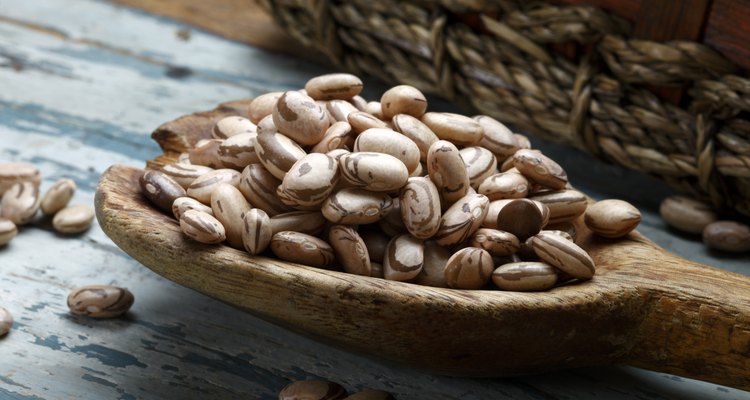
ribeirorocha/iStock/Getty Images
Pinto beans don't top the American Dietetic Association's list of high-potassium foods. However, pinto beans and other dried legumes are still valuable sources of potassium, as well as plant protein and other essential minerals like zinc and iron. The potassium content in pinto beans can vary, depending on your method of preparation. Dry pinto beans prepared at home contain more potassium than the more convenient, canned variety.
Significance
Minerals such as potassium are unique nutrients that can only be found in the earth, according to the Linus Pauling Institute. Plants absorb minerals from the soil as they grow, and minerals are passed on to you when you consume them. Each mineral serves a specific purpose. Potassium helps your nerves and muscles function normally, states the Merck Manuals Online Medical Library. Potassium, also classified as an electrolyte, also helps your body maintain the right balance of fluids.
Features
Dry foods such as pinto beans, as well as lima beans, lentils and kidney beans, are part of both the meat and bean group and the vegetable group on the U.S. Department of Agriculture's Food Pyramid. The National Institutes of Health, or NIH, indicates that potassium is present in all types of meat, poultry and fish, especially, salmon, flounder, cod and sardines. Pinto beans are an excellent alternative for vegetarians and vegans to meet their daily potassium needs. Pinto beans are also high in dietary fiber and folate, making them an asset on your dinner plate even if you're a meat-eater. The USDA recommends that you consume several servings of dry beans or peas a week -- at least 3 cups each week in a 2,000-calorie-a-day diet.
Potassium and More
One cup of boiled, unsalted pinto beans gives you 746 mg of potassium, or 21 percent of your Daily Value, or DV, according to Self Nutrition Data. The same amount of canned pinto beans contains less potassium, with 583 mg, or 17 percent of your DV. To give you an idea of how nutritional value decreases during cooking, a cup of raw pinto beans contains an astounding 2,689 mg of potassium, or 77 percent of your DV. A cup of boiled, unsalted pintos gives you 20 percent or more of your DV from other essential minerals, including iron, magnesium, phosphorous and manganese; and more than 10 percent from zinc, copper and selenium. However, pinto beans are richest in folate; 1 cup contains 294 mcg, or 74 percent of your DV.
Potassium Requirements
Your adequate intake level (AI) for potassium is based on the Food and Nutrition Board of the Institute of Medicine's recommendations established in 2004. Your need for potassium varies depending on age and other factors. Children between the ages of one and 13 require anywhere between 3,000 and 4,500 mg of potassium. Teens ages 14 to 18 and adult men and women, including those who are pregnant, need 4,700 mg of potassium daily. Nursing women need 5,100 mg of potassium.
Alternatives
If pinto beans aren't to your liking, there are a number of potassium-rich foods to choose from. Lima beans, another dry legume, is an even better source of potassium. One cup of boiled unsalted beans contains 969 mg of potassium or 28 percent of your DV. Other potassium-rich vegetables include artichokes, beets, Brussels sprouts, Swiss chard, collard greens, okra, parsnips, potatoes, sweet potatoes, spinach and tomatoes.
Related Articles
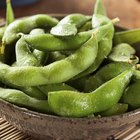
The Nutritional Value of Edamame Beans

Is Zinc Good for Hair Growth?

How Much Calcium Is in Peanut Butter?
Selenium For Children
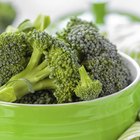
Foods Rich in Magnesium & Phosphorus

Vitamins for Mental Alertness
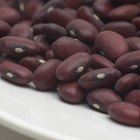
Red Kidney Beans Nutrition

The Sugar in Mangoes

What Are the Benefits of Great Northern ...
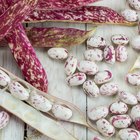
What Is the Nutrition for Cranberry ...

A List of Foods That Contain Choline

Nutrition Information on Blueberries

Fruits & Vegetables Rich in Potassium ...

Herbs That Contain Zinc

Green Bean Nutrition

Peanuts Vs. Pistachios
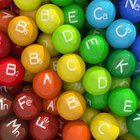
What Vitamins Help the Liver?
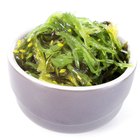
Why Is Seaweed Good for the Thyroid?

Nutritional Facts of Fava Beans

Why Are Date Fruits a Superfood?
References
Resources
Writer Bio
Lisa Sefcik has been writing professionally since 1987. Her subject matter includes pet care, travel, consumer reviews, classical music and entertainment. She's worked as a policy analyst, news reporter and freelance writer/columnist for Cox Publications and numerous national print publications. Sefcik holds a paralegal certification as well as degrees in journalism and piano performance from the University of Texas at Austin.
Photo Credits
ribeirorocha/iStock/Getty Images